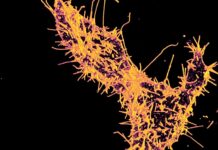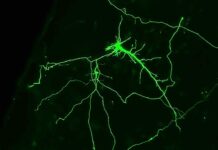Anxiety Tethered to Heightened Heart Rate in Mice: A Contextual Affair
Nature recently unveiled fascinating research suggesting a heightened heart rate’s proclivity for engendering anxiety in mice, albeit exclusively within precarious situations. This seminal study delineates possible intervention methods, targeting the heart to mitigate panic disorders. The centuries-old debate concerning the heart’s entanglement with emotions gains newfound clarity, as physical states cast their influence upon emotional ones.
Tracing the Roots: Philosophical and Scientific Foundations
The eminent psychologist William James, in his 1884 essay “What is an emotion?”, propounded the concept of emotions interwoven with bodily responses. Subsequent research has provided tantalizing, albeit indirect, evidence of the heart dispatching fear-evoking signals to the brain. A conundrum lingers, however; do emotions instigate heart rate fluctuations or result from them?
Optogenetics: A Pioneering Foray into the Heart’s Emotional Entanglements

Spearheaded by Karl Deisseroth, neuroscientist and psychologist hailing from Stanford, the innovative study wielded optogenetics—a technique manipulating neurons via light—to control cells deep within the body, including the heart. The team identified a novel channelrhodopsin, ChRmine, endowed with remarkable red light sensitivity and the capacity to conduct formidable electrical currents.
Engineering Mice with ChRmine-infused Cells
Researchers masterfully engineered mice with ChRmine-expressing cardiomyocytes—electrically-active heart cells—utilizing a viral delivery approach. Mice donned light-up vests, functioning as optical pacemakers, activating ChRmine-expressing cells and temporarily augmenting heart rates from 600 to 900 beats per minute.
Anxiety in Mice: A Context-sensitive Predicament
The team unearthed a curious result: mere heart rate elevation failed to incite anxiety. However, mice placed in potentially treacherous situations, such as vast, open environments known to induce stress, displayed heightened anxiety upon light stimulation compared to their ordinary counterparts. Context proved indispensable for experiencing anxiety.
Disentangling the Brain Regions Engaged
The researchers pinpointed two brain regions receiving input from the heart: the posterior insular cortex, privy to input from internal organs, and the prefrontal cortex. Optogenetics was employed to silence cells in these regions while stimulating the heart. Upon silencing the posterior insular cortex, escalated heart rates ceased to exacerbate anxious behaviors under stressful conditions.
Unraveling Implications: Anxiety and PTSD Treatment Breakthroughs
These revelations hold immense potential for informing anxiety and post-traumatic stress disorder (PTSD) research. Further exploration of traumatized animals and individual responses to increased heart rates may refine anxiety disorder treatments. Deisseroth posits that heart rate modulation could emerge as a viable therapeutic approach for panic disorders, as numerous cardiac interventions boast safety and tolerability.
Prospective Research and Therapeutic Exploits
As the heart’s enigmatic influence on emotions is illuminated, a myriad of possibilities for future research and therapeutic applications unfurls. Delving deeper into the heart rate-emotion connection may yield more efficacious treatments for panic disorders, anxiety, and PTSD.
Dissecting Individual Disparities
Probing individual distinctions in response to heightened heart rates may offer invaluable insights into anxiety disorder manifestation and treatment. Diverse reactions to elevated heart rates across individuals and animals could facilitate tailored treatment strategies for specific cases.
Scrutinizing PTSD Impact
Further investigations involving animals with PTSD could elucidate the heart rate’s role in modulating the context-dependent impact on anxiety. This knowledge may pave the way for innovative treatment approaches for PTSD, incorporating heart rate modulation alongside other therapeutic interventions.
Optogenetics and Beyond: Advancements in Research Techniques
As optogenetics and other research methodologies continue to evolve, scientists gain unprecedented access to the intricate relationship between the heart and emotions. With increasingly precise tools to study this connection, researchers may unveil hitherto unknown insights into how the heart sways emotional states, ultimately discovering novel methods for managing anxiety and related disorders.
Epilogue
Deisseroth’s groundbreaking study offers compelling evidence of the heart’s pivotal role in modulating emotions, specifically within the realm of anxiety. As research in this area expands, the development of novel therapeutic approaches targeting the heart may revolutionize the treatment of panic disorders, anxiety, and PTSD. The ongoing advancement of optogenetics and other research techniques is crucial for deepening our understanding of the heart’s influence on emotions and uncovering innovative therapeutic strategies.
Google News | Telegram
















